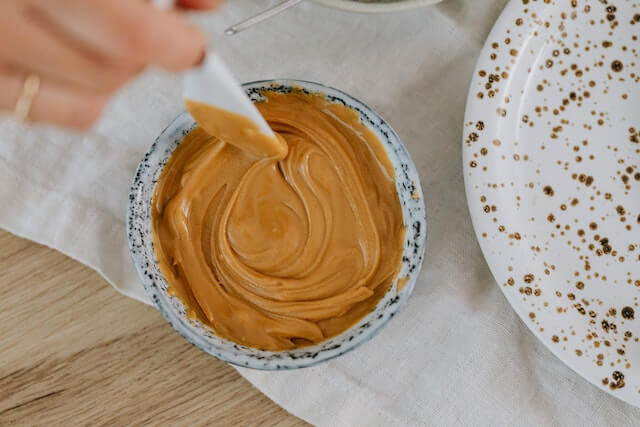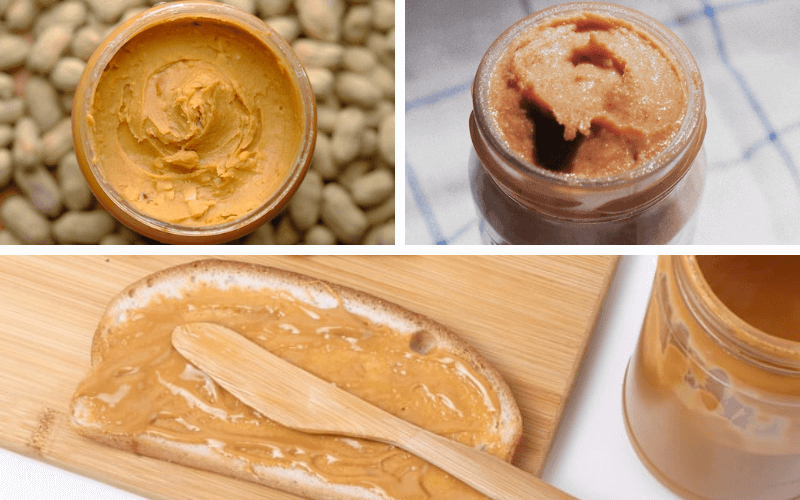Go into any home in North America and there are some pretty good odds that its kitchen cupboards contain a jar of peanut butter in it. However, when it comes to diversity, we suspect that most people stick to one type of peanut that they seemingly love.
This article is for the people who want to learn about other types of peanut beyond their familiar go-to option. Hopefully this will allow many people to find a new peanut butter that they can enjoy for years to come!
Creamy Peanut Butter

Creamy (smooth) peanut butter is the most common type found at grocery stores. It has a creamy texture that spreads easily,. This makes it perfect for sandwiches, dressing, and more. Creamy peanut butter is made by grinding roasted peanuts until they become a smooth and velvety paste. It offers a classic peanut butter taste that is mild and pleasing.
Crunchy Peanut Butter
Craving a little texture in your peanut butter? Crunchy peanut butter is the one to grab at the store! This type contains small, crunchy peanut pieces mixed in with smooth peanut butter. It offers a satisfying balance between the creamy spread and the nutty bits. It does not spread as easy as creamy peanut butter but it can certainly spread on bread or be used for various other purposes such as in cookies or as a topping.
Natural Peanut Butter
If you’re looking for a healthier option, natural peanut butter might be the choice for you. According to the FDA, “natural” means “nothing artificial or synthetic (including all color additives regardless of source) has been included in, or has been added to, a food that would not normally be expected to be in that food. ” “Natural” does not pertain to production methods such as the use of pesticides.
Natural peanut butter has a rich, earthy flavor and a slightly runnier consistency due to the absence of stabilizers in many products. You’ll often have to stir this type of peanut butter to reincorporate the separated peanut oil. Frankly, stirring peanut butter is a pain but worth it for many people who enjoy a more pure peanut taste.
You’ll often hear people describe natural peanut butter as having no sugars or oils. However, that is not always the case for all peanut butter products labeled “natural”. Jif Natural, for example, is made with peanuts, sugar, palm oil, salt, and molasses.
Be sure to read the ingredients of natural peanut to be sure it is suitable for your dietary needs.
Organic Peanut Butter
For people who prefer organic products, there are certainly a few mainstream organic peanut butter brands out there. They are made from organically grown peanuts, meaning they are cultivated without the use of pesticides or synthetic fertilizers.
Organic peanut butter follows strict production standards to ensure that you’re enjoying a product that is better for both you and the environment. It often comes in smooth and crunchy variations, allowing you to enjoy your preferred texture while making a sustainable choice.
Flavored Peanut Butter
If you’re feeling adventurous and want to add a twist to your peanut butter experience, flavored peanut butter varieties are worth a look. This type of peanut butter mixes in additional ingredients like honey, chocolate, cinnamon, or even spicy flavors to create a unique and exciting taste. Flavored peanut butter can add a burst of flavor to your sandwiches, fruits, smoothies, or baked goods to make for a more enjoyable eating experience.
Homemade

Peanut butter can be easily made at home if you have a food processor, dry roasted peanuts, and salt. You simply run the peanuts through the food processor with added salt to taste for about 10 minutes until smooth and creamy. Don’t worry if the mixture looks dry initially. It will eventually turn creamy with patience. Furthermore, you will need to scrape the sides of the processor bowl as needed (say every 45 seconds) until the peanuts no longer collect on the sides.
Common Peanut Butter Questions
Are there any allergy concerns with peanut butter?
Peanut butter can cause severe allergy attacks for people with peanut allergies. Symptoms can include itching, skin reactions, digestive issues (i.e. cramps, diarrhea), shortness of breath, anaphylaxis, and runny nose (source). Be sure to read the full list of ingredients for potential other allergens in peanut butter.
Does peanut butter contain protein?
Peanut butter is a good source of protein. A 2-tablespoon serving has about 7 grams of protein. However, this same serving size has roughly 190 calories with about 15 grams of total fat. You should consider eating peanut butter in moderation.
Are there any alternatives to peanut butter for people with allergies or who prefer something different?
Yes! The availability of peanut butter alternatives has skyrocketed over the previous decade or so. Almond, sunflower (Sunbutter), soy, hazelnut, chickpea, and walnut butters are a few example of alternatives.
What are the popular brands of peanut butter?
Jif, Skippy, Justin’s, Smucker’s, Reese’s, Peter Pan, Planters, Smart Balance, Crazy Richard’s, Santa Cruz, Adams, Peanut Butter & Company, and store brands are what’s popular in the United States and beyond.
How is peanut butter made?
Check out this video for a general idea of how peanut butter is made in the factory.
Final Thoughts
Peanut butter comes in various types to cater to different preferences and dietary needs. Whether you prefer the smoothness of classic peanut butter, the crunchiness of peanut pieces, the natural and organic options, or the exciting flavors, there is a type of peanut butter to satisfy just about every palate. We encourage you to try different varieties and discover the one that pleases your taste buds the most.

